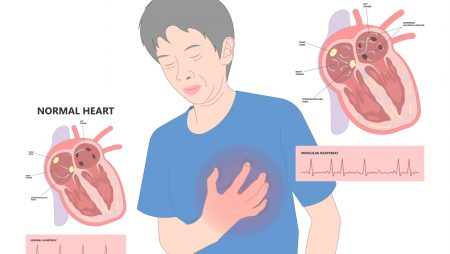



Get new exclusive access to healthcare business reports & breaking news




Cryoablation is a medical procedure involving destroying specific tissue to treat various medical conditions. While cryoablation has been shown to be effective in some cases, it is critical to understand its presence, use, and comparative benefits to other therapy modalities.
The evolution of medical technology has played a significant role in improving the administration of cryoablation treatments. These advancements made by industry specialists, such as IceCure Medical, have enhanced the therapy’s overall precision, safety, and effectiveness.
Cryoablation is a medical technique that involves freezing and destroying targeted tissue at sub-zero temperatures. This procedure allows physicians to reduce pain levels, improve functioning for those suffering from rheumatoid arthritis or uterine fibroids, stop the growth of cancerous tumors, or even wholly destroy any malignant cells found in affected areas. Cryoablation demonstrates remarkable potential in treating common conditions associated with many health issues without resorting to surgical procedures – making this technology an attractive choice for specialists across various medical disciplines.
Cryogenic probes introduce sub-zero temperatures, with extreme precision, that penetrate deep into tissues, destroying abnormalities.
Over the years, technological advancements have been essential in improving the administration of cryoablation as a treatment. These advancements have improved the procedure’s precision, safety, and effectiveness. Cryoablation machines and probes have also become more compact and sophisticated. Miniaturization of the technology allows easier access to difficult-to-reach areas within the body, reducing the procedure’s invasiveness and minimizing damage to surrounding healthy tissue.
Furthermore, cryoablation devices now include advanced temperature monitoring systems. These systems ensure that the chilling process reaches and maintains an ideal temperature, which improves tissue destruction precision.
The targeted area will eventually be reabsorbed over time, resulting in tissue regeneration, creating healthier impacted areas with remaining original filaments being pumped away from the body’s lymph system, restoring balance, helping improve overall health, and sustaining patients’ lives.
Deciding between cryoablation and traditional surgery is critical when treating specific health issues. Both approaches have advantages and disadvantages; the condition, patient factors, and clinical goals frequently influence the decision.
Being minimally invasive, cryoablation minimizes trauma to the body, reduces scarring, and typically leads to less pain and a shorter recovery period.
Traditional surgical approaches, on the other hand, introduce a myriad of patient complications, such as:
Cryoablation, known for its exceptional precision in tissue targeting, may be more appropriate for treating neoplasms near critical structures or sensitive organs, as it reduces the risk of unintended damage to nearby healthy tissue.
While RFA is also precise, the heat produced may occasionally impact surrounding tissue, resulting in a higher risk of collateral damage than cryoablation. This is especially important when treating neoplasms near or inside vital structures.
This variant of ablation is a technique that uses energy to heat and destroy tissue. Although it is also characterized for its precision, it is more likely to cause thermal injury to surrounding tissue than cryoablation.
Cryoablation is a vital medical procedure with a long history of use in various medical specialties. Its effectiveness stems from its precision and minimal invasiveness. However, the decision between cryoablation and other forms of therapy is influenced by factors such as the patient’s condition, the exact location of the problem, and the treatment goals. A healthcare provider should consider these factors when recommending an appropriate treatment plan.